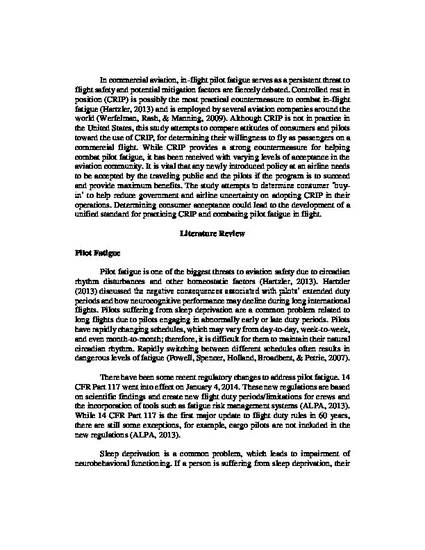
Prior studies demonstrate that controlled rest in position (CRIP) may help compensate for pilot fatigue. CRIP allows for one pilot to nap in their cockpit seat during the cruise phase of flight, provided that certain policies and procedures are followed by the other crew members during this period. The purpose of this research was to gather information from consumers and pilots on their willingness to fly if the pilots utilized CRIP. Our project employed a two-study design that manipulated both the length of the flight and the number of passengers onboard. Additionally, affect measures were collected through the use of a valid Likert scale to determine if affect had any mediating effect on the willingness to fly of participants. Study 1 was deployed to consumers while Study 2 sampled from both consumers and pilots. The findings indicated female respondents were significantly less willing to fly when CRIP was used than males, while pilots were willing to fly across all conditions. Affect was shown to be a mediating variable in all but one condition in both Study 1 and Study 2 between the types of passengers. The paper provides a discussion on these findings, identifies practical implications, and provides suggestions for future research.
Available at: http://works.bepress.com/scott_winter/4/
